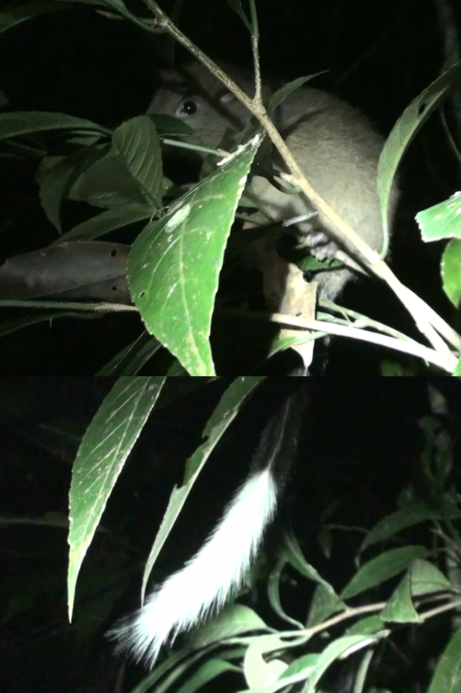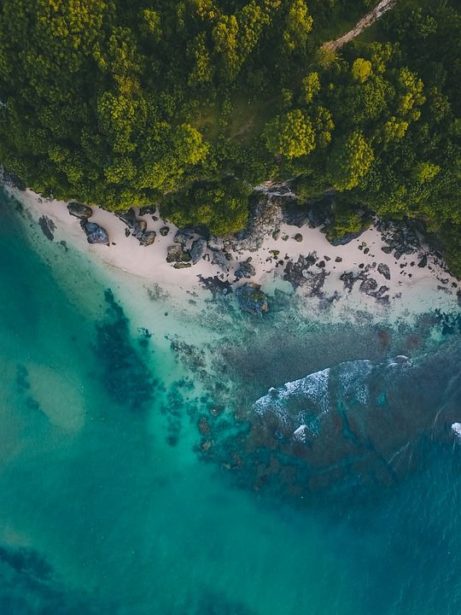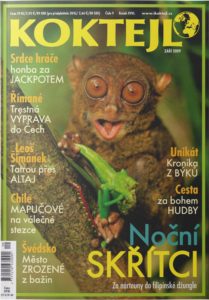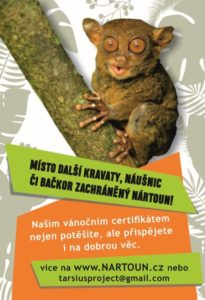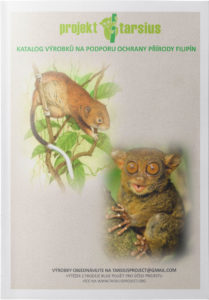Expedition Dinagat 2019
We are in the very last phase of preparations for the next expedition do the Philippines!
We plan a short trip to visit Bohol Island to visit our tarsiers at the centre that the Tarsius Project helped to establish and present our results to local conservation authorities.
But we plan to spend the biggest part of our field time on Dinagat Island again.
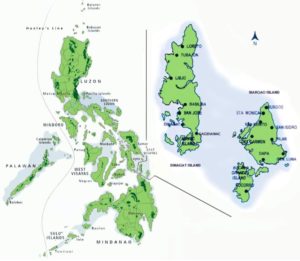
The Dinagat Island lies northeast of the north-eastern peninsula of Mindanao, part of the ‘Dinagat – Siargao cluster’ of islands. Much of the island has been cleared but several areas of closed canopy forest remain there. Mt. Kambinlio and Mt. Redondo area in the north of the island is recognized as a Key Biodiversity Area with Extremely high critical priority of conservation. However, at the same time it is rich in minerals and has been exploited heavily by mining companies as well as by illegal logging and mining.
Due to isolation Dinagat possesses high rate of endemism (flora and fauna). It is home to 100 birds and 400 plant species. 20 species of vertebrates and 13 species of plants are classified by IUCN Red Lists as threatened species. Our target area is home to Dinagat Bushy-taled Cloud Rat (Crateromys australis) which is classified as critically endangered and endangered Dinagat Gymnure (Podogymnura aureospinula). In addition, Dinagat tarsier (Tarsius syrichta), a distinctive evolutionary lineage of primate was recently discovered.
Tarsius Project will visit Dinagat Island for the fourth time. For the first time we went to Dinagat in 2009 with my colleague Lubomír Peške searching for a 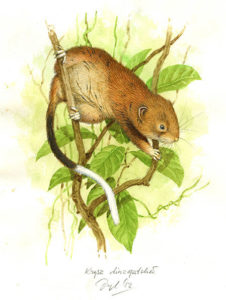 unique Dinagat tarsier. Distinct Dinagat tarsier (sub)species was later on described by an American zoologist and his team. In 2012 we went there again and this expedition was super-successful. We have rediscovered a Dinagat bushy-tailed cloud rat which wasn´t seen for 37 years. (e.g. you can read more here..).
unique Dinagat tarsier. Distinct Dinagat tarsier (sub)species was later on described by an American zoologist and his team. In 2012 we went there again and this expedition was super-successful. We have rediscovered a Dinagat bushy-tailed cloud rat which wasn´t seen for 37 years. (e.g. you can read more here..).
Cloud rats are the biggest (body size 30-70 cm) and most spectacular murids of the world, endemic only to a few Philippine Islands. They are nocturnal arboreal animals. The Dinagat bushy-tailed cloud rat (Crateromys australis) is the least known among them. So far, it was known only from one specimen captured in 1975. Since then number of scientific expeditions have searched for this elusive species, but with no success. It changed in early 2012 when it was rediscovered by us. The lost species was scientifically confirmed and this huge hairy grey-brown rat with hairy and conspicuously black-white tail was video documented for the first time ever.
I am very happy that our rediscovery has helped to raise conservation actions and in 2016 we spend another month in the field mapping the area that could be protected by a law. Until that time there were no protected areas on Dinagat Island. And we achived good results so far. Moreover, I observed and recorded the critically endangered Dinagat bushy-tailed cloud rat (Crateromys australis) for the second time. Another huge success is the finding of Dinagat Gymnure (Podogymnura aunospinula), related to hedgehogs, which is for the first time when this elusive species has been photographed and videorecorded in the wild. We also recorded tarsiers (Tarsius syrichta) in the area.
These are the main three species that we will focus on in our study. The project aims to collect important behavioural and ecological data about these endangered species of mammals found on Dinagat. As in previous expedition we plan to work in close cooperation with local community and popularize conservation value and pride through conferences, social media, fora, education campaign, and festival events. The gathered information will highlight the importance of conservation of the target area and its habitat that is currently very crucial.
If you wish to support our activities we will be very pleased to receive any financial support on
IBAN: CZ08 6210 6701 0022 0712 5950
BIC: BREXCZPP
you can purchase gift certificate or you can adopt a tarsier or cloud rat. This adoption is symbolic and will help to finance our activities.
![]()
Thank you 🙂

